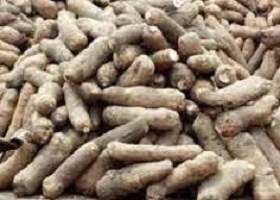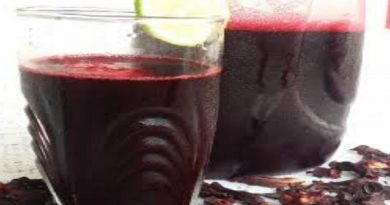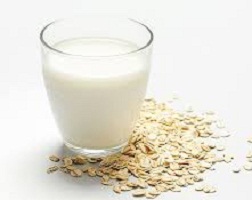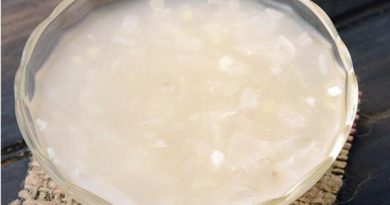Yam: Benefits & How to Cook African (Puna) Yam
Yam, found largely in Africa, Central America and the Caribbean, is different than the vegetable we think of as a yam.

Yams are best for those following a paleo, grain-free, and whole30 diets; also they are a great source of real food carbohydrates
The U.S. version of yam is, in fact, a variation of a sweet potato! While sweet potatoes are medium in size with smooth skin, sweet flavor, and moist mouse feel, yams are much larger and longer in size.
Sometimes they are huge with rough, scaly grayish skin, much drier and starchier white flesh that is not very sweet.
Keep reading for advice on ways to cook African yams perfectly, no matter the recipes you want to use them with.
What is a (Real) Yam?
Yams are the edible starchy tuber of a climbing plant native to Africa and Asia, with the majority of the crop coming from Africa.
Yams are closely related to lilies and grasses. They vary in size and when compared to sweet potatoes, are starchier and drier.
African Yam
Yams (Puna) are very popular in Nigeria and other parts of Africa. Do you know that yam production in Nigeria is by far the world’s largest, accounting for over 70–76 percent of the world production?
According to the Food and Agricultural Organization report, in 1985, Nigeria produced 18.3 million tonnes of yam from 1.5 million hectares, representing 73.8 percent of total yam production in Africa.
When Are Yams Ready to Harvest in Nigeria
Nigeria yams are in season around August to October in the western part of the country while north-central yam producing states like Benue, Nasarawa, and Niger have yams in abundance September to November.
Yam Benefits: What Are the Uses of Yam?
Yams are nutrient-dense tuber vegetables that come in various colors.
However, they’re a great source of fiber (which helps keep hunger at bay), manganese, potassium, copper, vitamin A, and C and antioxidants.
Yams are associated with various health benefits and may reduce inflammation, boost brain health, and improve blood sugar control when eaten in moderation.
Overall, they’re versatile, easy to prepare, and a great vegetable to incorporate in your diet in both sweet and savory dishes.
Types of Yam
There are over 600 ranges of yams and 95% of these crops are grown in Africa but when it comes to colors:
There is white Puna (brown skin and white inner color, the skin is rough) and Yellow Puna (brown skin just like white Puna but yellow internally).
These are the popular Nigerian Puna colors.
How/Ways to Cook Yams
Yams can be prepared/cooked in many ways and the most common ways are boiling, frying, and baking or roasting.
Firstly, the yam’s skin has to be peeled and discarded and the flesh can be used in the same way as a regular white potato or sweet potato.
For side dishes, they’re often boiled or baked (peeled or unpeeled). They can be added to soups, stews, and braises.
Sometimes boiled yams are mashed to serve as a side dish or for use as an ingredient in quick bread
Fried Yam
- Firstly, peel and slice the puna into 1-cm circles.
- Then, heat a thin layer of coconut oil or avocado oil in a frying pan until medium-hot.
- After that, shallow fry the puna slices for 5 minutes each side or until soft and golden brown.
Roasted or Baked Yams
- Firstly, preheat the oven to 200 C / 400 F. Then, peel the yam and dice it into cubes, slice it into circles or chip-like shapes
- After that, lay them out on a flat baking sheet covered with some parchment paper and season with salt and pepper and any other spices.
- Lastly, cooking time will depend on the size of the cubes and slices but anywhere between 20-30 minutes.
Boiled Yams
Boiled puna is the easiest and quick yam recipe. If you can boil an egg, then preparing this recipe is no big deal.
Boiled puna is prepared without any additional ingredients thus leaving you with a wide variety of sauces and stews to choose from.
Instructions
- Firstly, boil the cubes or sliced yams for about 15 minutes or until tender.
- You can season the water with salt or add vegetable stock cube for extra flavor.
- Serve cooked boiled yams as they are or drizzle with oil.
- Alternatively, serve as a side dish with meat or vegetable stew or curry (or anything saucy).
- Also, you can mash them into a coarse puree with olive oil or butter, garlic, and fresh herbs or spices.
Pounded Yam
Boiled puna can be pounded into a stodgy mash that is often served as a dumpling with stews or soups. In Africa, it is known as fufu.
Also, you can make pounded yam (yan) by cooking yam flour in hot water.
For more information, please read: Pounded Yam
Braised or Stewed Yams
- Use yams instead of white potatoes in soups, stews, and casseroles.
- It works fabulously in meaty stews and casseroles
- A simple vegetarian dish would be yams braised with onions, garlic, and tomato passata.
Use in Fritters and Baking
- Firstly, grate some yam root and combine with egg and spices to make fritters. Pan-fry in lots of oil for crispy finish and soft, hash-like center.
- Also, cooked yam flesh can be used in waffle and pancakes batter, muffin and biscuit dough.
Other African Yam Recipes You Would Love
- Yam Balls – This is mashed yam seasoned with spices and a binder.
- Oven-Baked Yam Chips: A healthy alternative recipe to fried yam.
- Ofe Nsala (White Soup) is thickened with yams and also eaten with yams.
- Onunu: This is made by pounding boiled African yam and boiled plantain together with palm oil.
- Porridge/vegetable: A one-pot yam recipe. It is ridiculously easy to make and very delicious too.
- Yams with Beans
- Yams in soups: swap potatoes for yam cubes in soups.
Cost and How to Store Yam Tubers
The price of yams is affordable and is accessible in any Nigerian market near you.
Storage
- Firstly, make sure the yams for storing are good, healthy yams.
- Secondly, store in a cool, dry place.
- Thirdly, protect from direct sunlight and water
- Fourthly, you can freeze raw for 3-6 months (cut, peel, rinse and freeze) or cook and freeze.
- Lastly, freezing raw or cooked yam food requires putting in freezer bags or freezer-safe airtight containers.
FAQ
Q: What is the difference between sweet potatoes and yams?
A: The terms “sweet potato” and “yams” are often used interchangeably, causing a lot of confusion.
While both are underground tuber vegetables, they are very different.
They belong to different plant families and they are not related botanically.
So why all the confusion?
Yams are a monocot (a plant having one embryonic seed leaf) and from the Dioscoreaceae or Yam family.
Sweet Potatoes, often called ‘yams’, are a dicot (a plant having two embryonic seed leaves) and are from the Convolvulaceae family.


